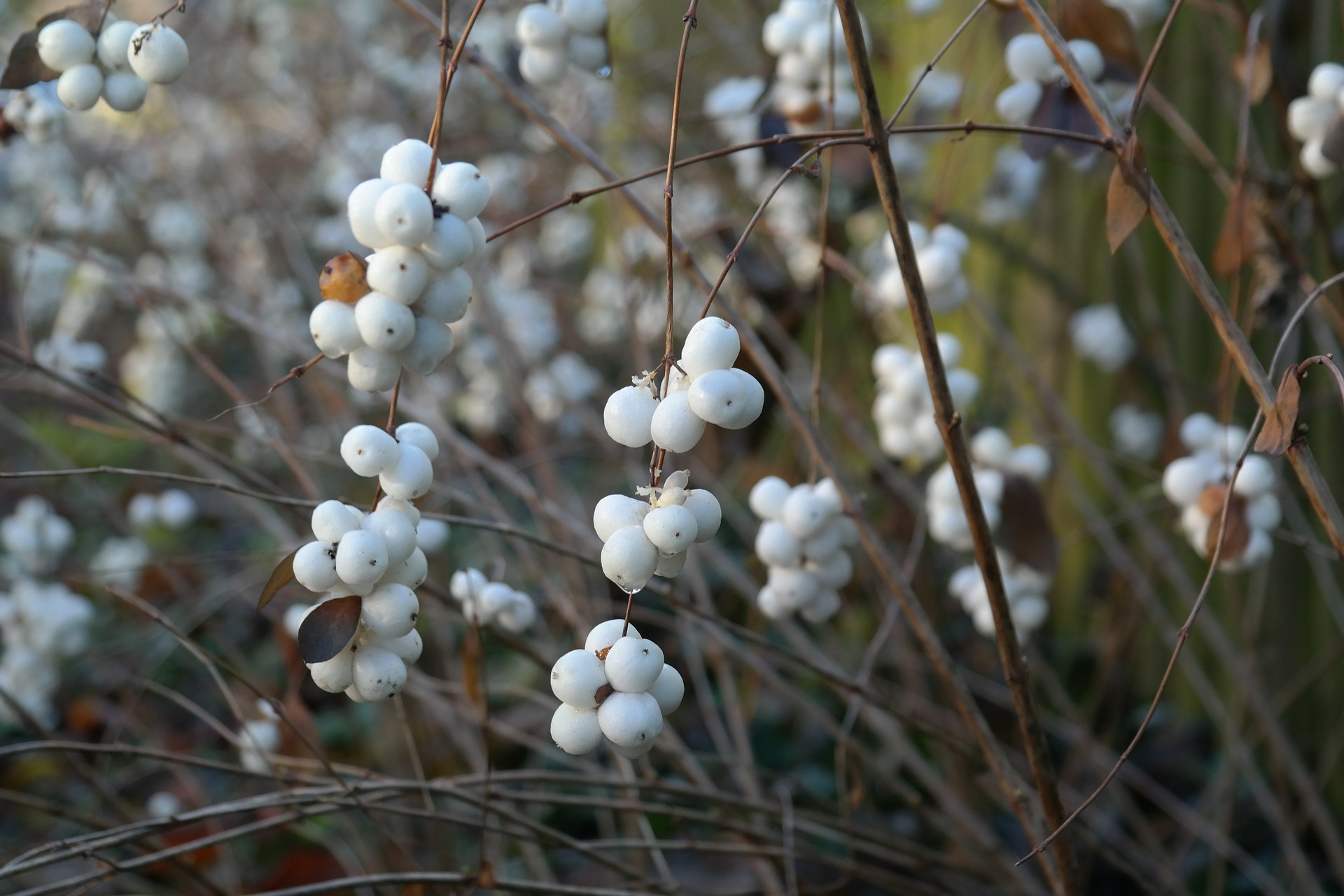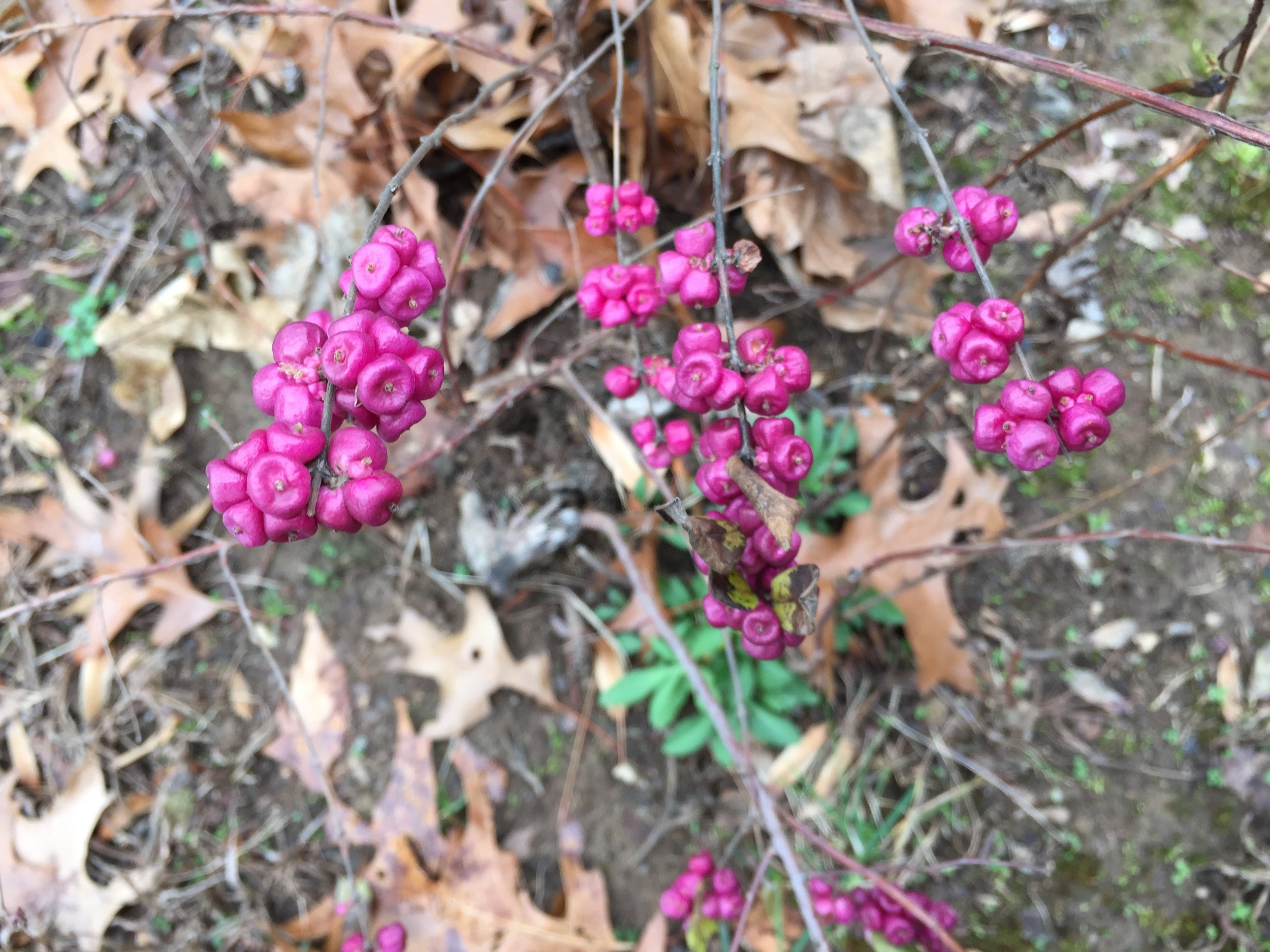After the bright lights and colors of the holiday season it can be nice to settle down with a little subtle color left in the landscape after the lights come down. Close cousins coralberry and snowberry are great picks for low-key, hazy winter interest. It's definitely not a plant for a formal garden, but if you have more of a natural style or if you're looking to add a little something special to a wooded edge, this may be just the thing you need.
Coralberry and snowberry are hardy, adaptable understory shrubs native to North America that naturally spread to form low drifts unless you intentionally contain them. Both have loose habits with thin, arching stems that are covered in small, dainty, dark green leaves in the summer and clusters of berries in the winter. The main difference between the two is berry size and color. As you might guess, snowberry has white berries and coralberry has pink berries. Snowberry tends to have larger berries up to 1/2" across with coralberry closer to 1/4". There are also hybrids available with larger pink berries and colors that fall between the white of snowberry and the typical dark pink seen on coralberry in the wild. Since these shrubs are naturally found in Indiana, in addition to providing visual interest through the winter they also help feed wildlife. Everybody wins!
Common Name: Coralberry and Snowberry, Coralberry is sometimes called Indian Currant
Scientific Name: Symphoricarpos species and hybrids
Notable Varieties: 'Proud Berry' (large, medium color pink berries, more compact that straight species)
Light: full sun to partial shade (better berry production with more sun)
Size: 3-6' tall depending on variety, suckers to form broad colonies
Soil: very tolerant of most soil conditions, including clay and drought
Blooms: both have clusters of small bell-shaped white and pink flowers in late summer
Other Notes: native to Indiana, deer tolerant, attracts birds in the winter







